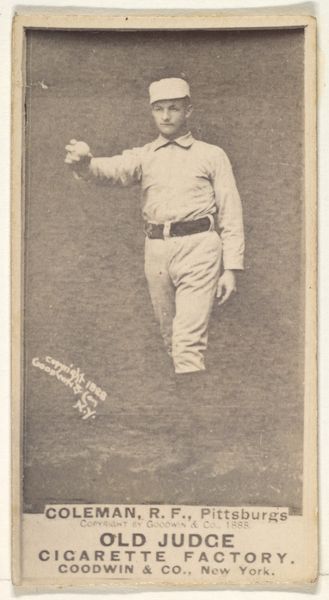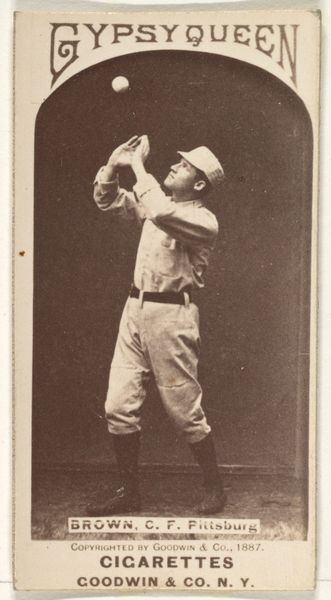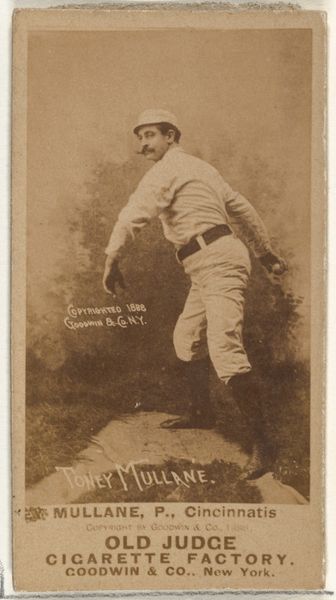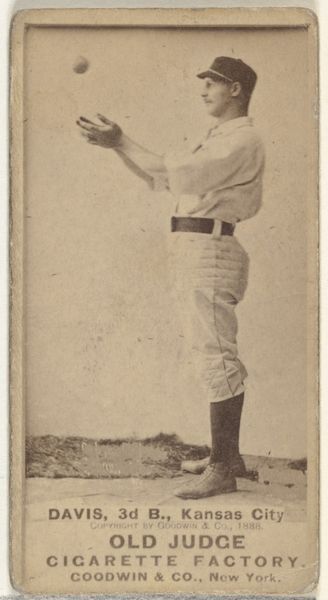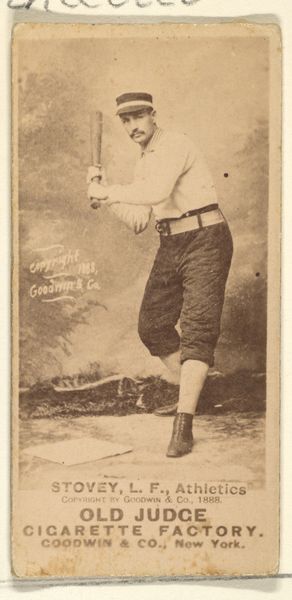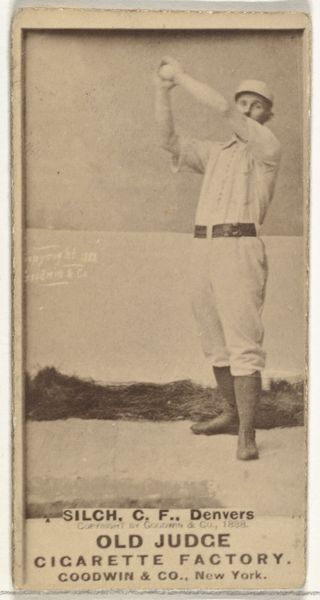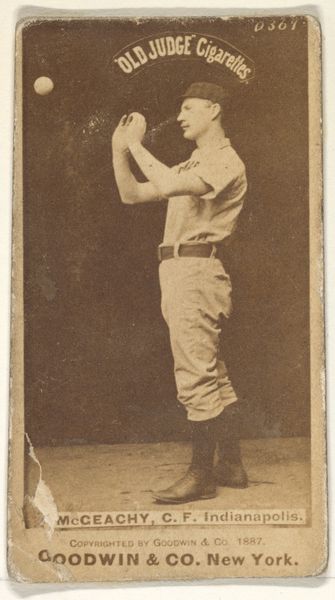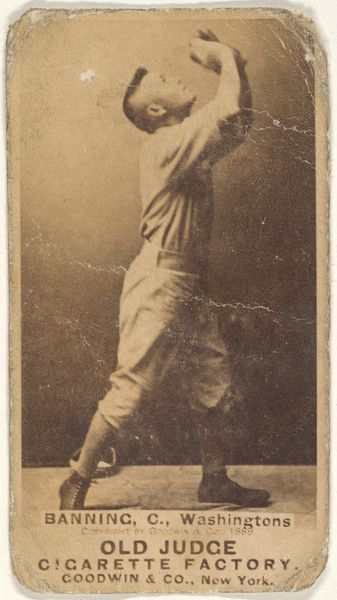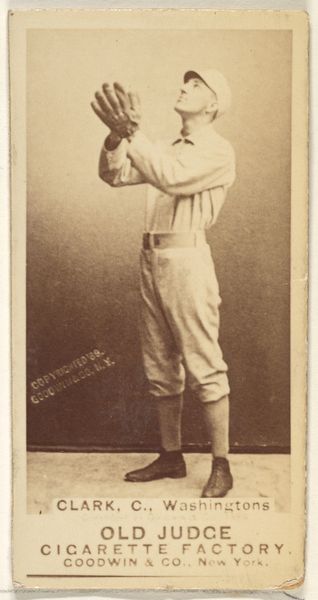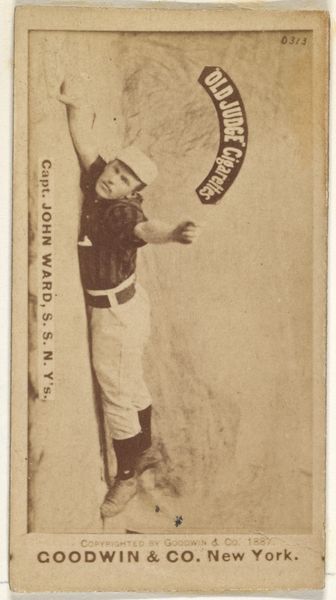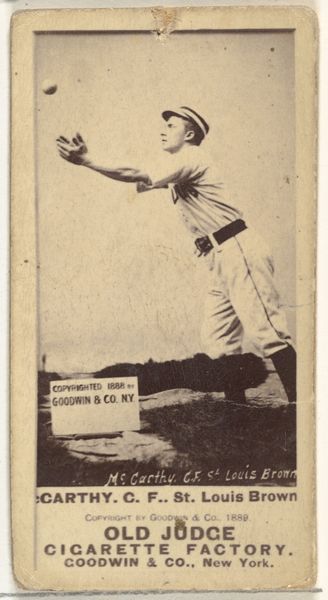
Hugh N. "Little Nick" Nicol, Right Field, Cincinnati, from the Old Judge series (N172) for Old Judge Cigarettes 1888
0:00
0:00
drawing, print, photography
#
portrait
#
drawing
# print
#
photography
#
athlete
Dimensions: sheet: 2 11/16 x 1 3/8 in. (6.9 x 3.5 cm)
Copyright: Public Domain
Editor: This is "Hugh N. 'Little Nick' Nicol, Right Field, Cincinnati," a photographic print from the Old Judge series made in 1888 by Goodwin & Company. The card depicts Nicol reaching high, presumably to catch a ball. It’s striking how something so ephemeral as a baseball player's action was captured and then reproduced for mass consumption with a cigarette brand. What's your perspective on this piece? Curator: Well, consider this print within the context of late 19th-century industrialization and the rise of consumer culture. It’s fascinating how photography, a relatively new technology, was deployed not for ‘high art’ but for advertising and popular entertainment. Notice the “Old Judge Cigarette Factory” stamped right on it. It collapses boundaries between art, sport, and industry, really. How do you think the mass production of images like these altered perceptions of athletes? Editor: That's interesting, it made the athletes marketable in a way, objects of consumption themselves, much like the cigarettes. Does the photograph's inherent reproducibility impact our perception of the player's skill, since this specific moment can be captured, owned, and distributed? Curator: Precisely! The labor involved—not just Nicol’s on the field, but also the factory workers producing these cards—becomes obscured. It's important to remember the working conditions and social hierarchies inherent in this system. Were these affordable to the working class, do you think, or exclusively for the wealthy smoking elite? Editor: I'd imagine, given its use for marketing a tobacco product, and its scale, it would be accessible to a broader spectrum of society. So the material context provides a wider insight. Curator: Exactly. Understanding the material conditions of production and consumption illuminates the social and economic realities embedded within this seemingly simple image. Editor: I hadn't thought about it that way. Thanks!
Comments
No comments
Be the first to comment and join the conversation on the ultimate creative platform.
